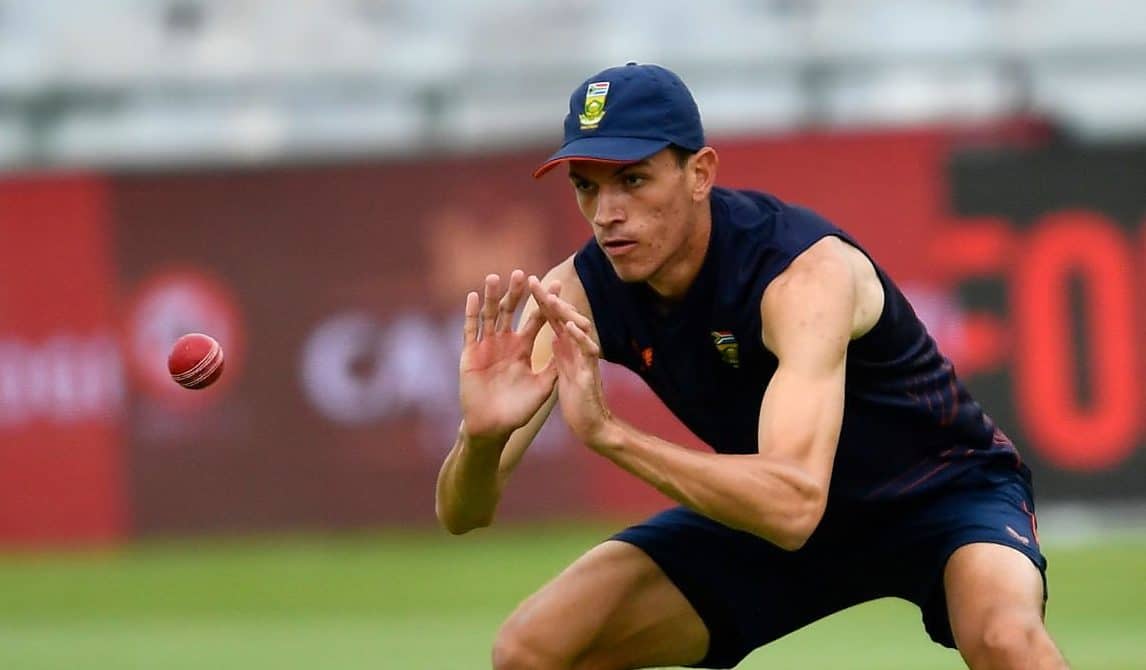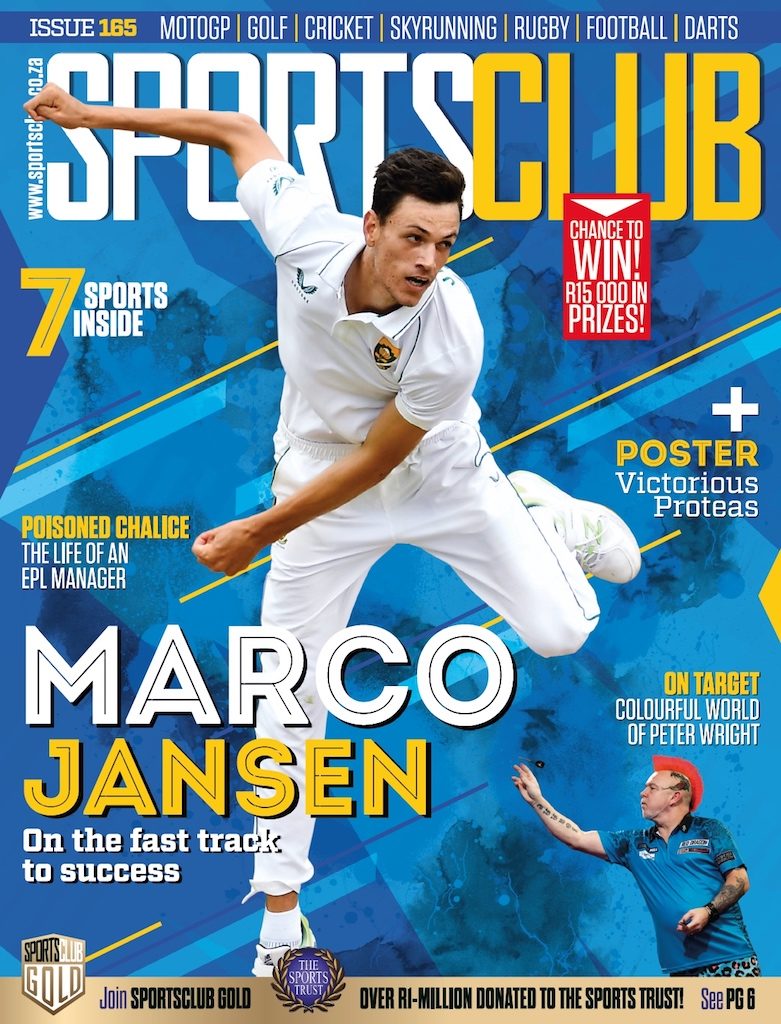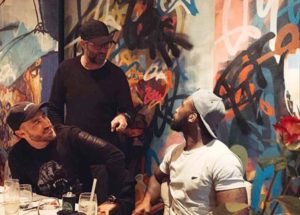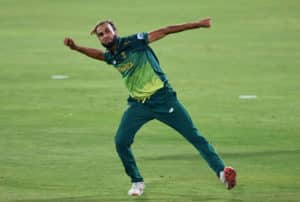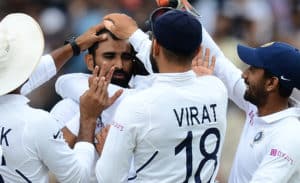Twenty-year-old left-arm fast bowler Marco Jansen was the find of the Proteas’ Test series against India, writes SIMON BORCHARDT in SportsClub magazine.
There was a great exchange between Proteas debutant Marco Jansen and SuperSport’s Shaun Pollock before a TV interview on day three of the first Test against India in Centurion. Jansen looked nervous as he shifted his weight from one foot to the other, which perhaps explains why he tried to lighten the mood.
‘Just remember, easy questions please,’ he said with a big smile, drawing laughter from those around him.
‘How old are you?’ asked Pollock, a former Proteas fast bowler with 421 Test wickets to his name.
‘Twenty-one.’
‘Just checking.’
‘But I’m Afrikaans, that’s the difference,’ chirped Jansen.
‘So alles is voor die wind, leterlik en figuurlik [so everything is well, literally and figuratively],’ responded Pollock with an Afrikaans idiom.
‘Ja, alles is voor die wind [yes, everything is well],’ said Jansen with a smile.
Jansen need not have worried because Pollock’s first question was an easy one: When had he heard he would be making his Test debut on 26 December?
‘I found out I would be playing on Christmas Eve, when we had our team dinner,’ he said. ‘I couldn’t sleep that night. At 2am I wanted to go chip and putt but then I thought, no, I’m not going to wake people up to ask for a putter!’
Jansen’s selection for the first Test surprised many, with Duanne Olivier expected to make his return to the national team in place of the injured Anrich Nortje.
Olivier had been the top wicket-taker in the 4-Day Domestic Series, with Jansen coming off the back of a drawn three-match series for South Africa A against India A in which he had taken six wickets at an average of 31.83. (It later emerged that Olivier had recently had Covid, which had affected his training workload, while he also had a hamstring niggle.)
Jansen’s first day of Test cricket was a difficult one as India reached 272-3 at stumps. The rookie went wicketless, although he was unlucky not to dismiss opener Mayank Agarwal as wicketkeeper Quinton de Kock dropped a difficult catch.
However, Jansen and the Proteas bowlers turned things around on day three (day two was rained out) as India collapsed to 327 all out. Jansen took the last wicket to fall, that of Jasprit Bumrah, who he would get to know well during the series.
While India went on to win the first Test by 113 runs, the Proteas took heart from that day three fightback as well as their performance with the ball in India’s second innings when Jansen and Kagiso Rabada each took four wickets. Jansen picked up three big scalps in Agarwal, Virat Kohli and Ajinkya Rahane, the biggest of them all being the India captain.
In 2018, a 17-year-old Jansen had impressed Kohli during a net session at the Wanderers after beating his outside edge three balls in a row (Marco’s twin brother Duan – who also plays for the North West Dragons – bowled at the tourists too while father Koos looked on).
‘I wasn’t as quick then as I was now, so my off-cutters were more effective,’ Jansen tells SportsClub when asked about that first encounter with Kohli. ‘Every time I beat his outside edge he threw the ball back harder!’
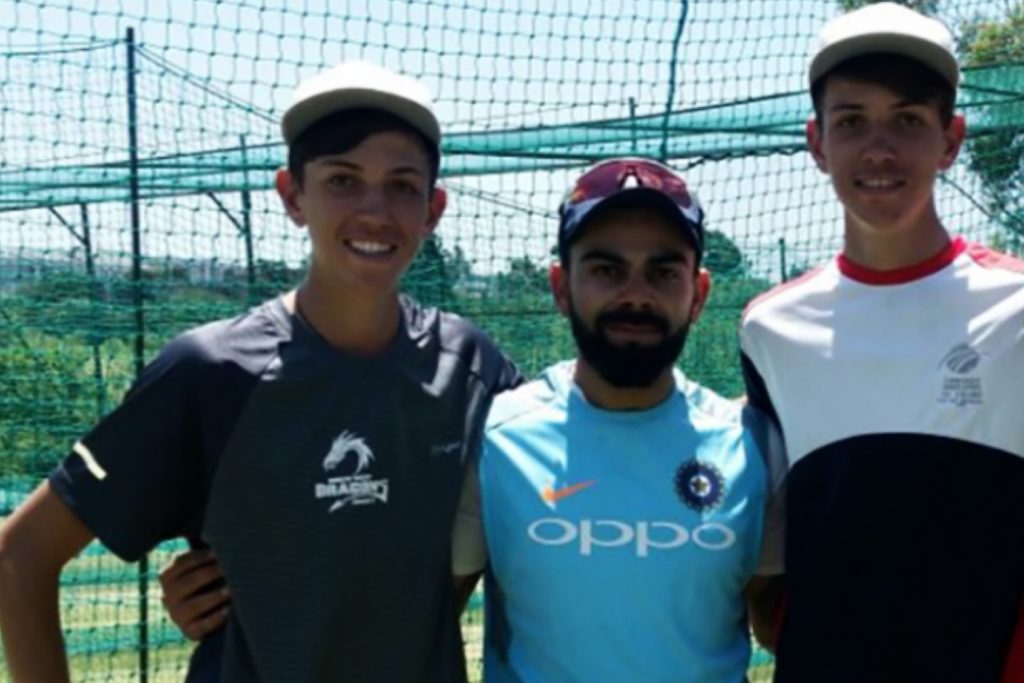
Three years later, on day four of the first Test in Centurion, Kohli was not so lucky when facing Jansen, nicking one through to De Kock.
‘When I bowled to Kohli in the nets I never thought I would get the opportunity to play for my country let alone bowl against him in a Test,’ says Jansen. ‘To get his wicket … I look back and can’t believe how things unfolded.’
So how did he turn things around in Centurion?
‘After the first innings, Gobes [Proteas analyst Rivash Gobind] came to me. He had looked at where I was releasing the ball and where I was bowling from in the crease. He suggested I bowl a bit closer to the wickets to make the batsmen play at more balls. I didn’t change anything technically in terms of my action.’
Jansen followed up his five wickets in Centurion with 4-31 and 3-67 in Johannesburg as the Proteas levelled the series with a seven-wicket win.
Jansen also showed his combative nature at the Wanderers when he clashed with Bumrah, who’s seven years his senior. Having taken several body blows from the Indian fast bowler while batting, Jansen returned the favour when he had the ball in hand. Bumrah shouted a few choice words at Jansen, who turned around and met his opponent in the middle of the pitch. Umpire Marais Erasmus moved quickly to diffuse the situation.
‘I had hit him twice on the shoulder and he had rubbed it like it hadn’t hurt,’ recalls Jansen. ‘So when I hit him on the shoulder for a third time I said, “Now rub that off.” Then he came up to me and said, “I’m here, I’m here.” Basically saying he’s not going to back down.’
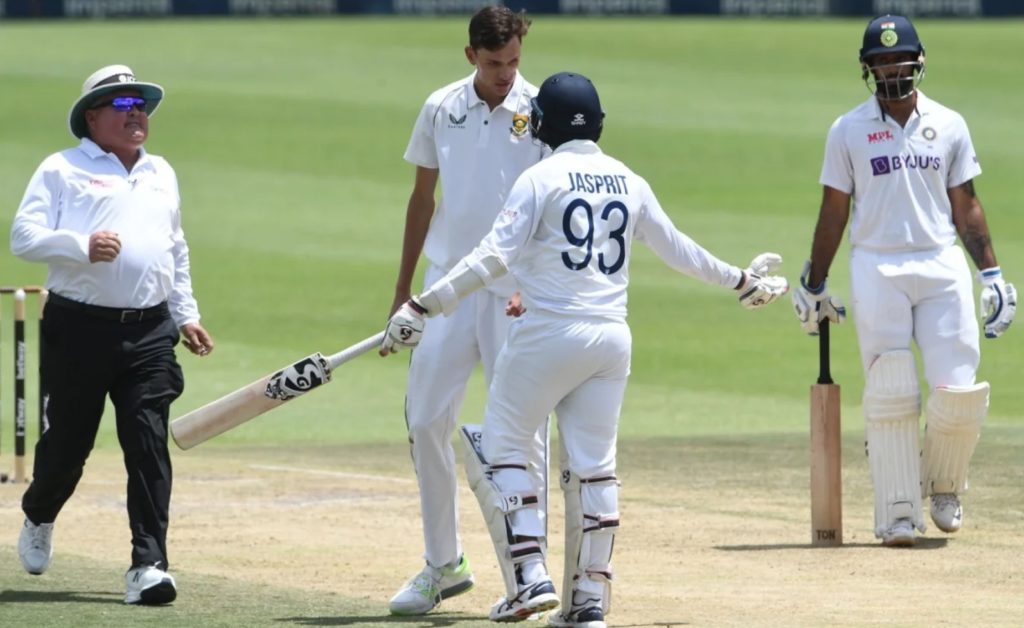
Jansen was just as influential in the series decider at Newlands, taking 3-55 and 4-36 as the Proteas won again by seven wickets. He finished the series with 19 wickets at an average of 16.47 and a strike rate of 32.6, with only Rabada (20) taking more.
While there’s no doubt Jansen can become one of the great South African bowlers, there’s also the hope he can become a genuine Test all-rounder able to fill that key No 7 position in the batting lineup. He averages 22.35 in first-class cricket having scored five fifties, one of which was an unbeaten 70 for South Africa A against India A.
‘I try to spend more time on my batting than my bowling, which I’ve already worked hard on with [bowling coach] Gordon Parsons at the Dragons,’ says Jansen. ‘If I struggle with my bowling, it’s small things and he helps me. With my batting, I need to make more adjustments, so I try to work harder on it. But I like batting and I believe I have the potential to become an all-rounder.’
JANSEN ON …
When he started playing cricket
‘I started when I was about three or four years old. I played any sport that involved a ball, including golf and rugby, and every now and then hockey.’
Who won the backyard cricket battles between himself and twin brother Duan
‘We were always very competitive. Sometimes he would win and sometimes I would. There were a couple times when we fought, like when he would get me out and we would debate if it was really out or not.’
His father Koos
‘He was our first and toughest coach! In primary school we would play on Saturday and then our dad would take us to the nets on Sunday and he would throw balls at us. We would practise for three to four hours.’
– This article first appeared in SportsClub magazine. How to subscribe.
Photo: Ashley Vlotman/Gallo Images


